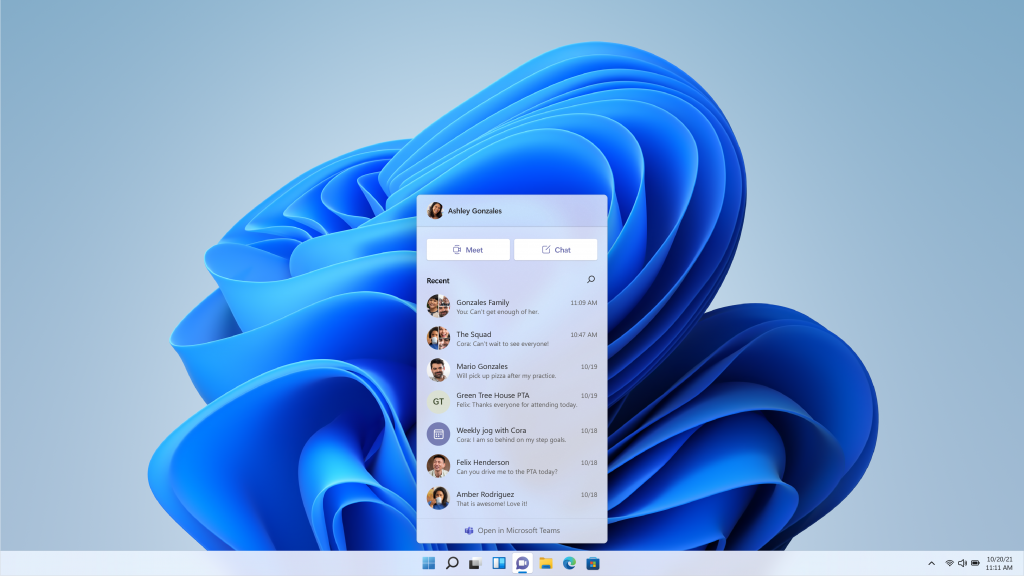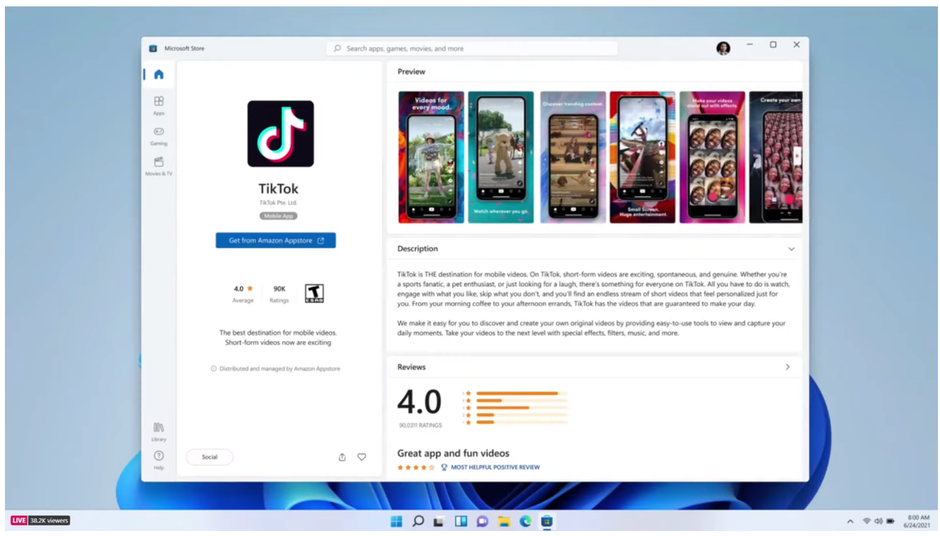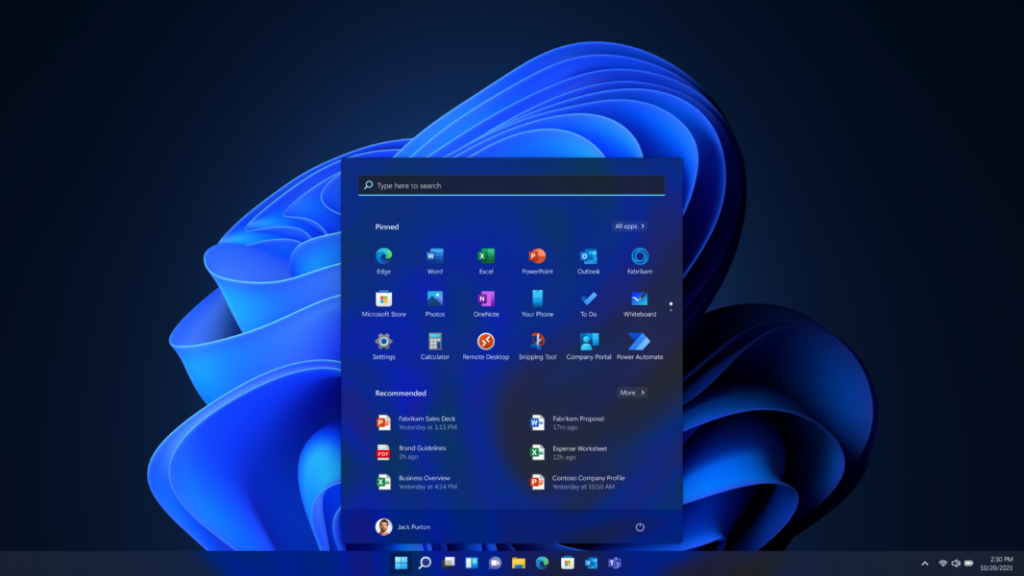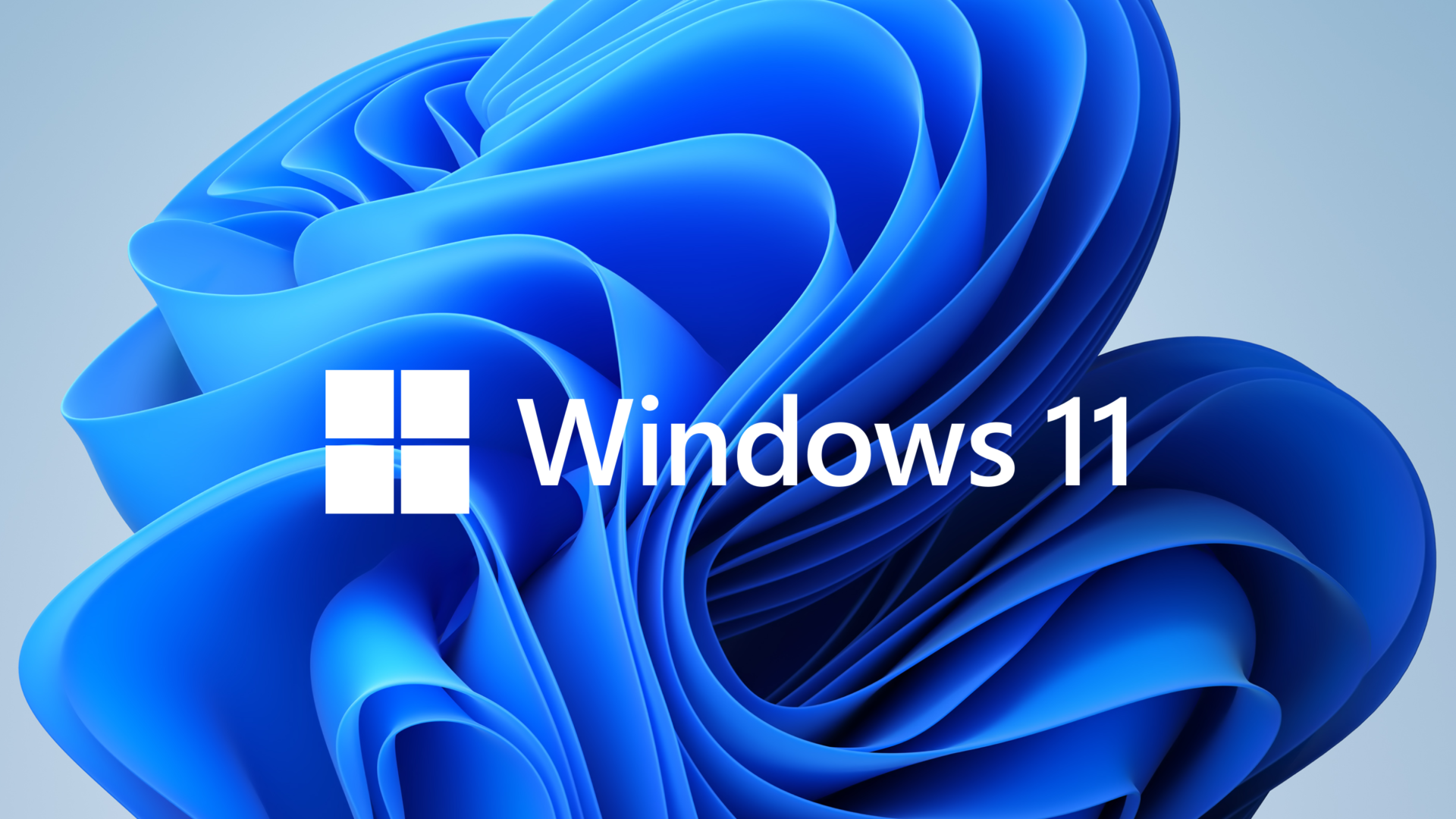Windows 11 has been released and there is a lot to talk about with you guys, this is gonna be a big one for you guys, for article porspective of course, so, lets get started.
Windows 11 will be a free update
It will be a free update. On (October 20, 2021, according to some reports), Microsoft officially announced the newest iteration of Windows, and they had a ton to show off. Most of the changes aren’t really particularly relevant for gaming, and since we pretty much exclusively cover gaming topics here, a lot of that stuff doesn’t really interest us. However, there are some things you’d need to know. At least upgrading is gonna be cheap.
Windows 11 is going to be free to all Windows 10 users. However, is that while it will launch on new PCs in quarter four, updates for existing Windows 10 users won’t arrive until 2022. The real issue with updating is kind of complicated, and something we’ll probably get into later. Microsoft is touting it as a free update, but the bizarrely steep hardware requirements are gonna make it difficult for a large number of users to actually upgrade without spending some money first. Again, we will get into more of that later. Let’s just talk about the actually interesting new features Windows 11 offers to gamers.
Windows 11 includes a feature called Auto HDR
Now, high dynamic range can make a game look pretty damn impressive when you get everything configured correctly and you’ve got an HDR compatible monitor. Before, HDR was an option you can enable in game, and it was generally only something that you could use with games that support it, but with Auto HDR, a feature they’re including with Windows 11, they’re making it so any game that uses DirectX 11 or higher can have HDR.

It’s a feature Microsoft used for the Xbox Series X in the past, and they’re porting it over to Windows. Like we said, it doesn’t work for every single game. They have to support DirectX 11 at least, so a lot of older games won’t see any improvements from this feature, but it’s still pretty cool that the option’s going to be included. A lot of people swear by HDR, so making it a more universal feature and allowing people to use it in games that wouldn’t normally have it is definitely one of the coolest additions with Windows 11.
DirectStorage
Here’s another pretty interesting Windows 11 exclusive feature, DirectStorage, which Microsoft describes like this. “Games can quickly load assets to the graphics card without bogging down the CPU.” Now, faster loading is always a good thing, and with DirectStorage, it sounds like we can expect some pretty significant improvements to game performance and loading if what Microsoft describes is correct. Of course, DirectStorage isn’t something that can just happen. There are requirements to using it
that you should probably know about.
First, you’ll need an NVMe SSD, solid state drive to store and play the games, along with DirectX 12 on your GPU with Shader model 6.0 support, so basically you need a newer graphics card and a decent solid state drive if you want to experience the benefits of this feature. This isn’t something that’s just coming to Windows platforms in general. The wording on their website makes it sound like this is going to be a Windows 11 exclusive feature, so if you plan on sticking with Windows 10, which just to be clear, is gonna be a lot of people, again, we’ll get into that in a little while, then you can’t use it.
Game Pass is going to be built in
This is a really nice update, even if it’s kind of small. Game Pass, which seems like it keeps getting better and better every time we see it, with all the games that are added to it free of charge in the coming months outside of the subscription fee, will be integrated into Windows 11. Well, more specifically, the Xbox app will be built into Windows 11, but that’s basically the Game Pass app on PC anyway, so there it is. This doesn’t sound like it’ll be that much of an upgrade, but it’ll just make the Game Pass a little easier to access, but it does show Microsoft’s commitment to the whole program by putting it front and center as a feature of the Windows update.
Hopefully, they’ll fix the feature where games remain on your PC even after removing it from the Xbox app. The fact that’s still an issue is honestly ridiculous, and it’s a big reason of why I’m still kind of wary of using the Xbox app on PC, ’cause it’s a bizarre issue that’s plagued this thing for years now, and as far as I can tell, it’s still a problem. Microsoft, stop doing that. Don’t leave an entire game’s installation in hidden folders, deep in app data. It makes this whole thing so much more appealing if you just do that.
Android apps can finally be natively used on Windows 11
So enough of the complaints, this is a legitimately great feature. You’re gonna be able to use Android apps on Windows. It was kind of ridiculous that if people wanted to access apps from an Android phone, they’d have to use an emulator, so Microsoft making it so they can be accessed normally is a nice surprise. How to actually get them is basic enough, but one kind of odd thing is that all the apps can be accessed from a third party app store, the Amazon Appstore, yet, the Google Play Store, which is most people’s main resource for Android apps, it’s not supported, it’s just Amazon.
Apparently Android apps can be sideloaded, meaning that you’re not forced to use the Amazon sort of launch apps, which means it’s possible to obtain apps that are not on the Amazon store and load them on Windows 11, but exactly how that’s gonna work is kind of a mystery. It’s kinda weird that Microsoft chose to partner with Amazon of all people to do Android integration, you know, instead of Google, but it is also better than nothing, and a cool first step into making these systems more compatible.

Easy way to create virtual desktops
It’s a basic feature, like some other GUI stuff revealed for Windows 11, but also kind of interesting. For gamers who use their PC for multiple purposes, this seems like a pretty neat thing to include, the ability to easily make multiple desktops that can be customized for things like work or gaming. I am not sure exactly how in depth these options are gonna be, but outside of just making it so you can have a gaming background when I use my PC for playing games and switch to like a more sedate background when I’m working, that’d be cool.
If I can save settings for screen brightness, color temperature, window size, sleep settings, stuff like that that’d be great if I could change those based on what desktop I’m using. What would be really useful is something like a gaming mode style thing, like something’s not particularly hard to change by hand, but like, it’d be nice to be able to switch between resolutions and color schemes and icon sets that you could swap between easily, depending on how I’m using the computer. At this point, we don’t really know what kind of options this whole virtual desktop thing really has. It sounds like it has potential, though, even if in reality, it’s probably just a way to swap between different wallpapers.
Requirement of TMP 2.0 chip for Windows 11
There’s a new requirement that they’re including in Windows 11. It’s that you have a TPM 2.0 chip. Like I said, we started saying that there were some issues at the top of this video, and this is where we’re gonna start talking about ’em. Most of the requirements for Windows 11 are fairly tame, and something that any decent PC should be able to meet for the most part at least. There’s one big but in there, though, like a big but, and not like a caveat but. Windows 11 requires a TPM 2.0 chip.
Now, a TPM is a trusted platform module that is either something integrated into a motherboard, or a thing that could be added to a CPU, and none of the PCs I tested could upgrade to Windows 11. Whole thing is bizarre. Maybe it’s just bad luck on our part, but it feels like many, many people are getting surprised by this requirement.
Prices are already skyrocketing on TPM chips in anticipation of the demand, but at the moment, who really knows how prices are gonna land? I for one am not planning on spending 3,700 to 7,400 Rupees just to have the privilege of beta testing Microsoft’s newest operating system. And I’m thinking that a lot of people are probably gonna think the same thing as me. There is a good reason Microsoft is pushing these chips.
It’s a security feature first, and supposed to protect encryption keys and sensitive data so that they’re more difficult to access if you’re a hacker, which is great, I’m happy they’re taking security more seriously. Like we’ve had numerous problems with that in the past. But at this point, it kind of seems like the actual amount of Windows 11 compatible PCs out there is gonna be really small, at least at first.
According to “Extreme Tech,” Microsoft isn’t just limiting installation based on the presence or absence of TPM. 2.0, the Surface Studio 2 is TPM 2.0 enabled, but uses a Core i7 7920HQ processor based on Kaby Lake. According to Microsoft’s support document, no Intel CPU earlier than eighth gen will support Windows 11. So no first-generation Ryzen or earlier CPU is listed as compatible with Windows 11. We will list those in the description, but it’s going to evolve from here, so keep an eye on the news. In custom PCs, most recent high or mid-range motherboards have a TPM chip.
You may actually have to change your BIOS settings if you want to upgrade
The Windows 11 rollout is not sounding like it’s gonna be that smooth. Whole TPM deal is fairly confusing, which has become very clear by a number of articles we found talking about how to upgrade. Issue is, I am mostly referencing this article from “The Verge” here, that along with the TPM 2.0 chip, you also have to have Secure Boot enabled. Most people probably have no idea if they have a TPM chip on their PC, but I guarantee you, they don’t know if they have Secure Boot enabled in their BIOS.
Almost nobody does fiddling with their BIOS outside of, you know, a very specific set of people, and accessing the BIOS is different from PC to PC. What setting’s required? Different as well. Sometimes you just need to turn on Secure Boot, and sometimes it’s called PTT instead, or you have to enable the TPM, even if it’s already installed. The fact that a lot of people are gonna have to go into their BIOS settings, a place where you can easily ruin your PC settings if you don’t know what you’re doing, is kind of wild for a Windows update.

In most cases, it doesn’t end up mattering because you probably don’t have a TPM anyway, but if you do, changing these settings might be necessary to even use it. Hopefully Microsoft’s gonna ease up on this requirement before Windows 11 launches, ’cause as is, people are not gonna have a good time mucking around with their BIOS settings. It’s a recipe for disaster, ’cause most users simply aren’t gonna bother. If nothing changes, I have to imagine the adoption rates for 11 are gonna be shockingly low when it starts actually rolling out. If you don’t see the TPM or FTPM option to BIOS, you’ll probably have to buy one. Just check if your motherboard has the port.
Windows 11 is finally ending 32-bit support
Probably not gonna come as much of a surprise to anybody, but Windows 11, they’re finally making it 64-bit only. You got a 32-bit PC, it’s obsolete. You can’t upgrade it. 64-bit has been the standard for a while now, so we kind of assumed this would happen eventually. 32-bit games, if you’re unaware, still run on 64-bit hardware, although compatibility issues can appear. One saving grace of modern Windows operating system is the backwards compatibility mode, which allows you to run games as if they were being played on older operating systems. It works pretty well on Windows 10, and as far as we can tell, isn’t gonna be removed for 11.
So, any 32-bit PC probably can’t be upgraded to Windows 11, the overlap’s probably gonna be fairly small, but I guess it’s possible. Still, if you see a headline talking about how 32-bit support is ending and start freaking about how your old games won’t work, don’t worry, they’ll probably work. And finally, any games that work on Windows 10 should work on 11.
According to most sources, Windows 11 is mostly the same as 10, even if some design elements are changing and there’s new features added. They’re apparently not removing most of the stuff there, basically just a long-winded way of saying that if you’ve got Windows 10, things should work mostly the same if you end up upgrading to 11. Game Pass is gonna have a lot of games on it, and they’re not all new. There’s a lot of old stuff there, and it’s in Microsoft’s best interest that these games work as they’re supposed to.
According to this article, games that work with 10 should work with 11. Games that had issues with Windows 10 will continue to have issues with 11. For anyone who still loads up older games on their PC from time to time, that’s obviously good to hear. But from my experience, sometimes it’s a little difficult to get something running on 10. It helps there’s a lot more resources to set up games on PC nowadays, and it all seems that that information won’t be immediately out of date when 11 comes out, so that’s good.
So, let us know down in the comment whats your thought on this Windows 11, what was you expections with Windows 11 and did it meet your requirements? Let us know down in the comment.
Thanks you for visiting our post, we really appricate it.
Similar post like this –
Xbox gave up live gold subscriptions for certain games to play free online


2 comments
Your article is really great, thanks alot.
Perfect, Thanks for sharing, keep adding more valuable content.
thank you sir